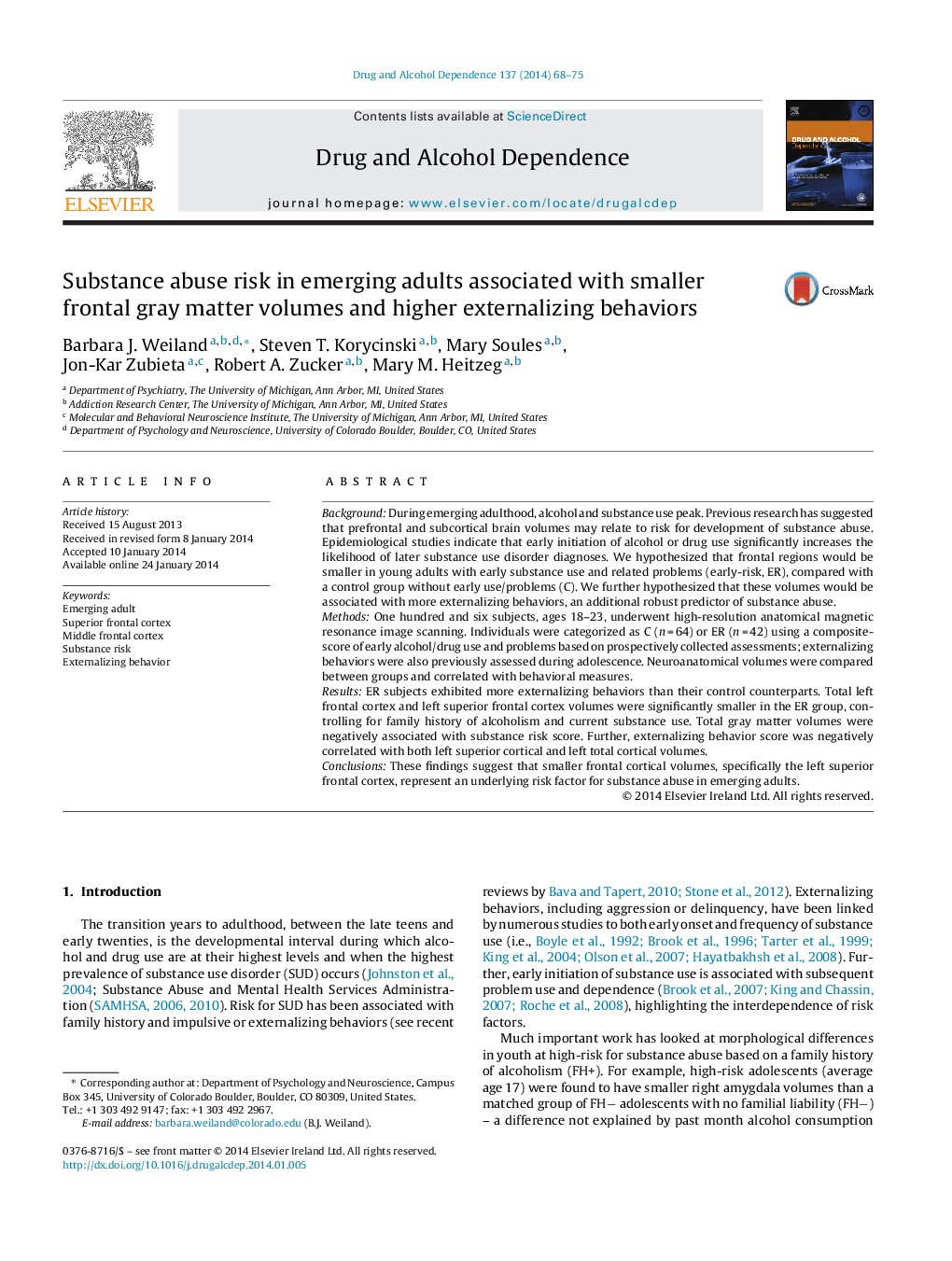| Article ID | Journal | Published Year | Pages | File Type |
|---|---|---|---|---|
| 1069941 | Drug and Alcohol Dependence | 2014 | 8 Pages |
BackgroundDuring emerging adulthood, alcohol and substance use peak. Previous research has suggested that prefrontal and subcortical brain volumes may relate to risk for development of substance abuse. Epidemiological studies indicate that early initiation of alcohol or drug use significantly increases the likelihood of later substance use disorder diagnoses. We hypothesized that frontal regions would be smaller in young adults with early substance use and related problems (early-risk, ER), compared with a control group without early use/problems (C). We further hypothesized that these volumes would be associated with more externalizing behaviors, an additional robust predictor of substance abuse.MethodsOne hundred and six subjects, ages 18–23, underwent high-resolution anatomical magnetic resonance image scanning. Individuals were categorized as C (n = 64) or ER (n = 42) using a composite-score of early alcohol/drug use and problems based on prospectively collected assessments; externalizing behaviors were also previously assessed during adolescence. Neuroanatomical volumes were compared between groups and correlated with behavioral measures.ResultsER subjects exhibited more externalizing behaviors than their control counterparts. Total left frontal cortex and left superior frontal cortex volumes were significantly smaller in the ER group, controlling for family history of alcoholism and current substance use. Total gray matter volumes were negatively associated with substance risk score. Further, externalizing behavior score was negatively correlated with both left superior cortical and left total cortical volumes.ConclusionsThese findings suggest that smaller frontal cortical volumes, specifically the left superior frontal cortex, represent an underlying risk factor for substance abuse in emerging adults.
